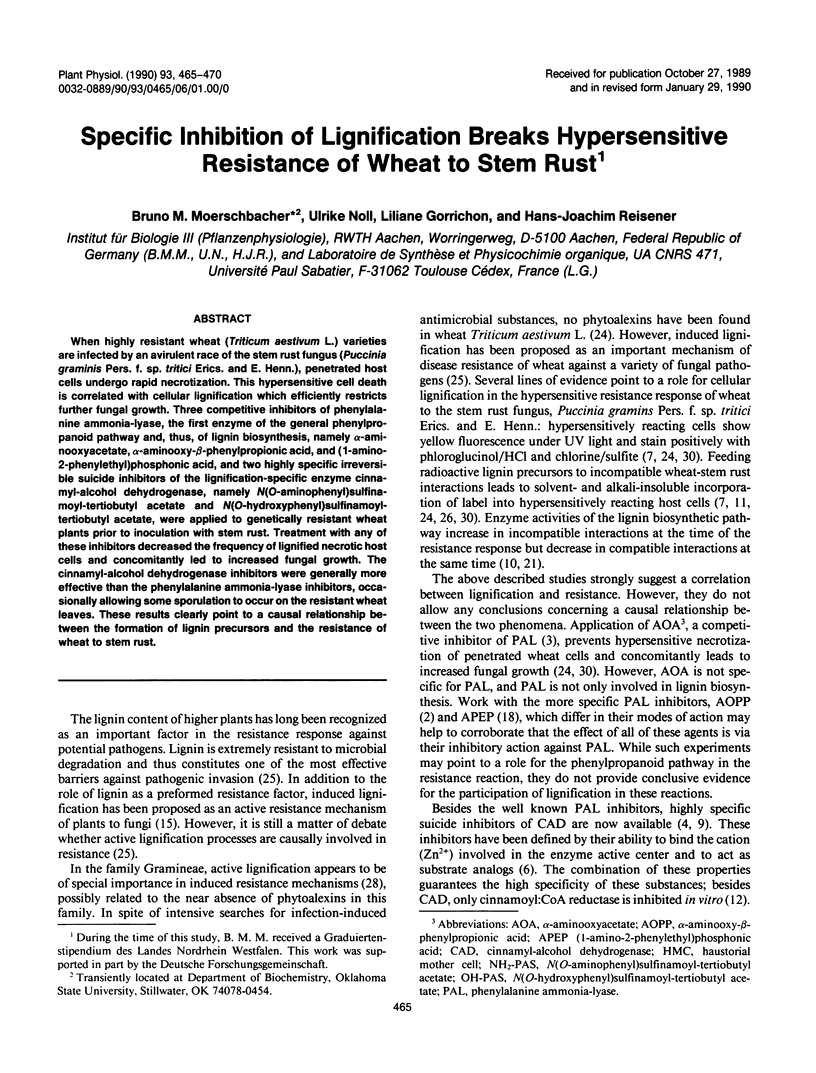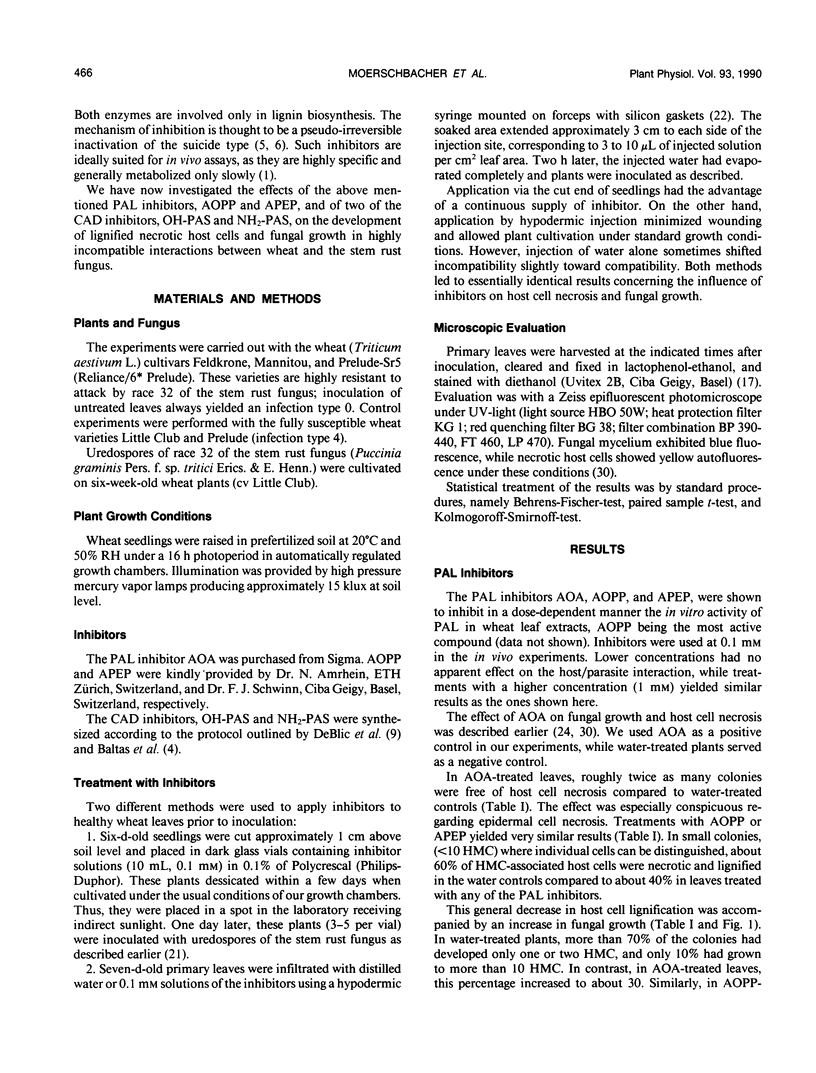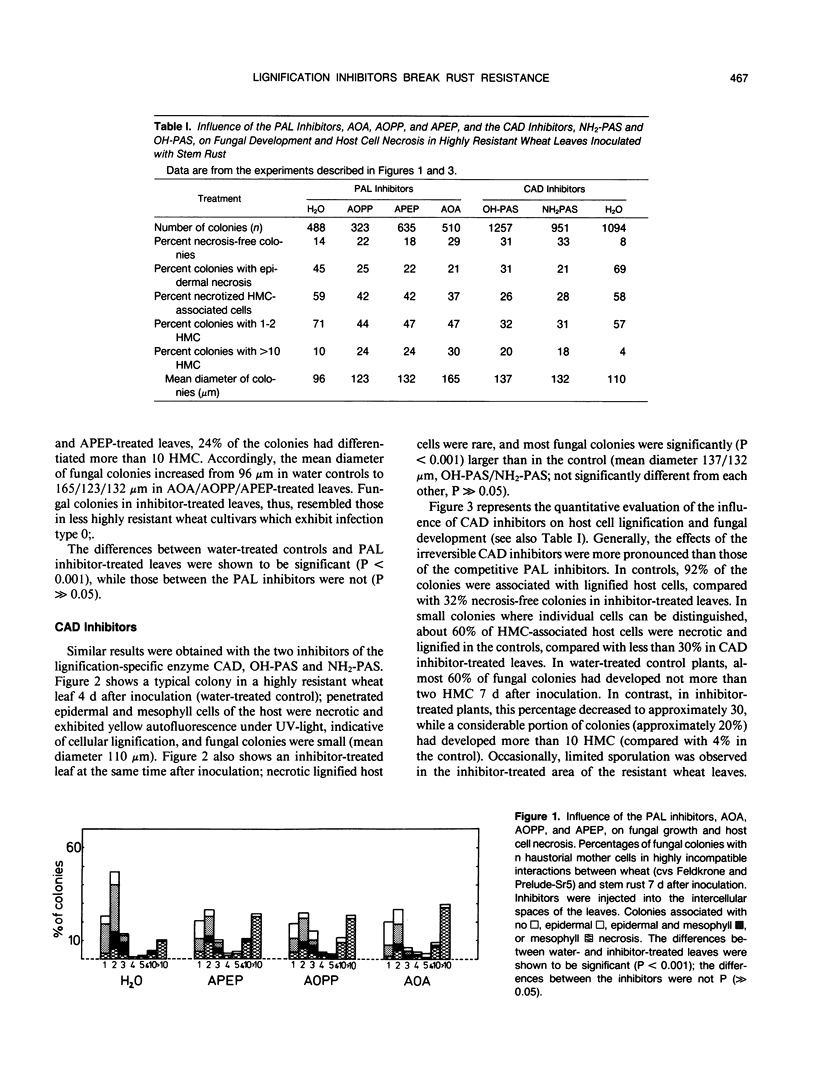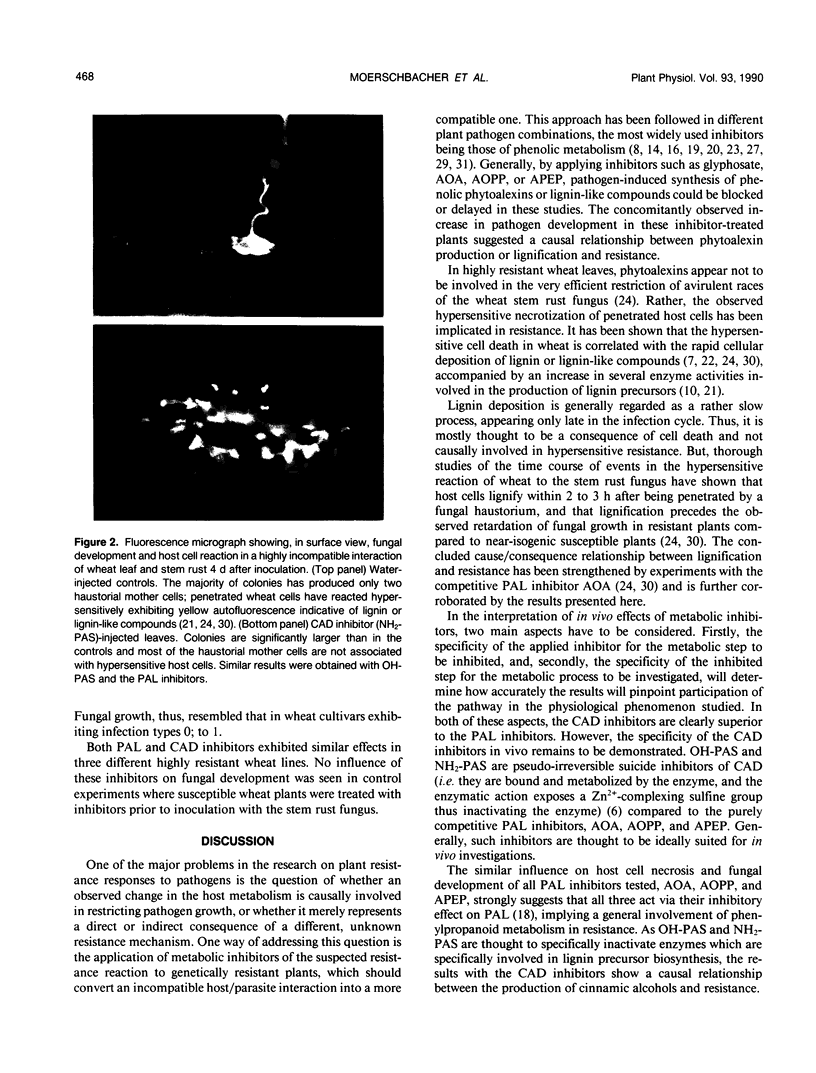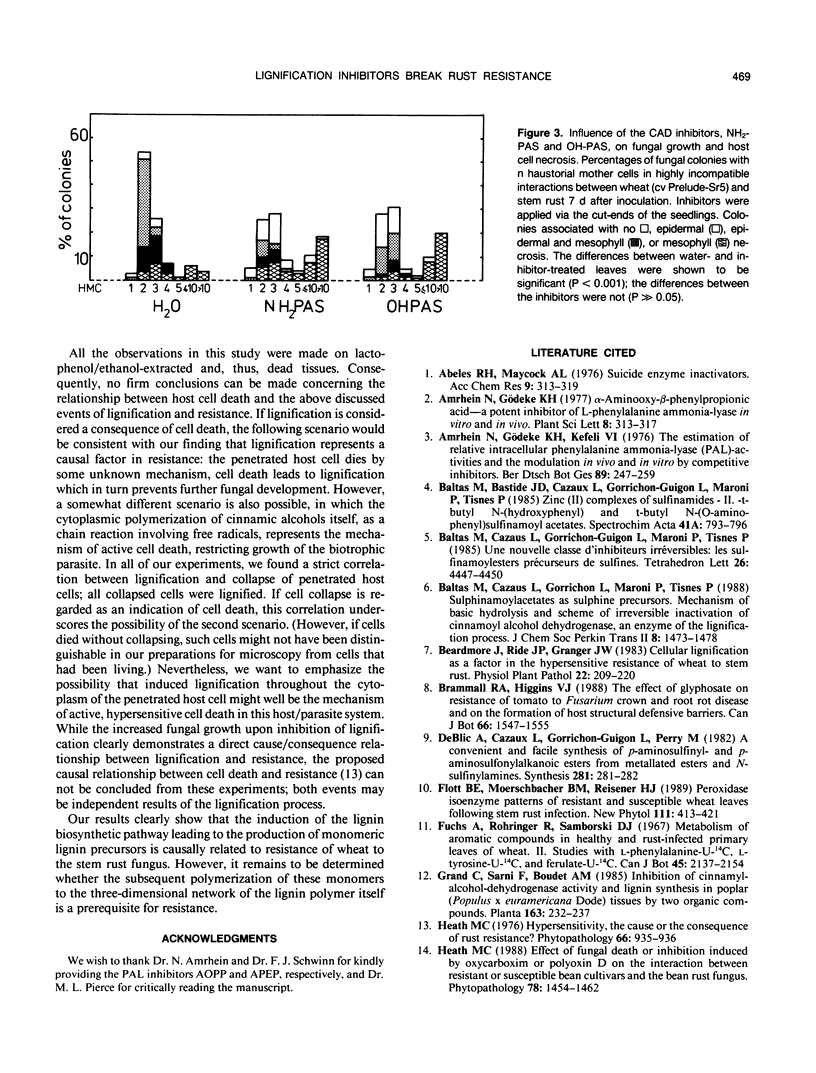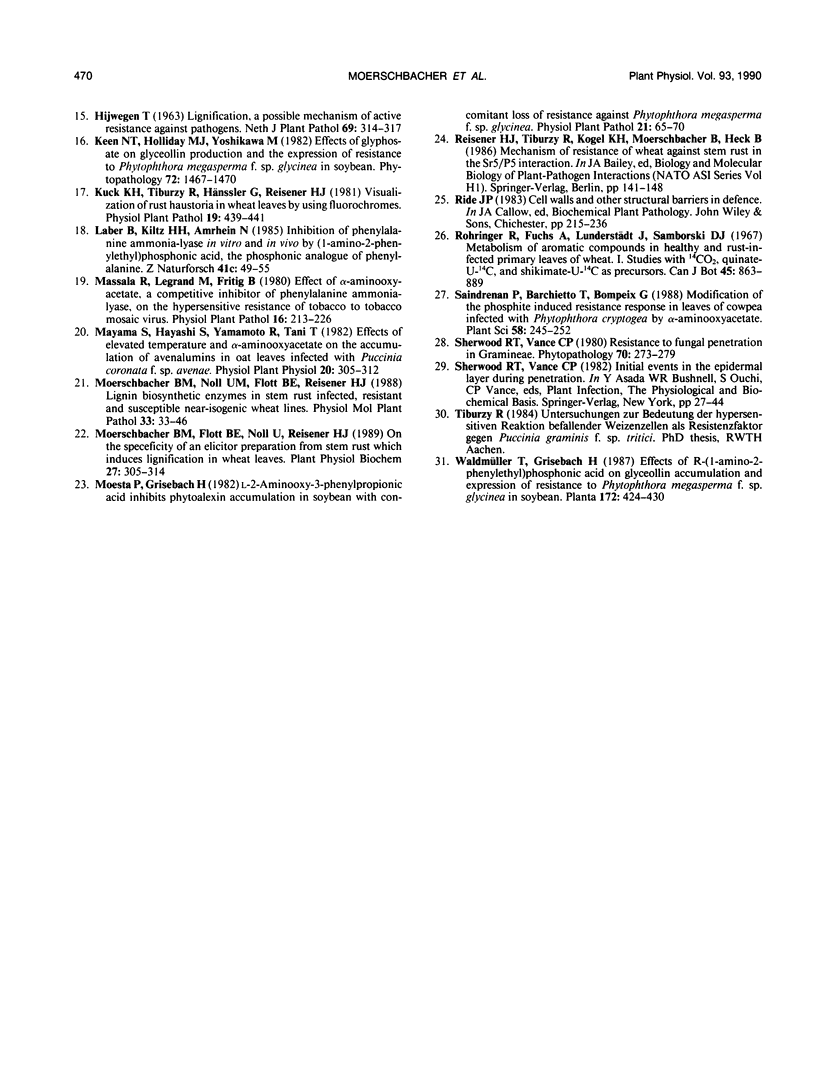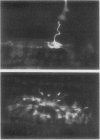Abstract
When highly resistant wheat (Triticum aestivum L.) varieties are infected by an avirulent race of the stem rust fungus (Puccinia graminis Pers. f. sp. tritici Erics. and E. Henn.), penetrated host cells undergo rapid necrotization. This hypersensitive cell death is correlated with cellular lignification which efficiently restricts further fungal growth. Three competitive inhibitors of phenylalanine ammonia-lyase, the first enzyme of the general phenylpropanoid pathway and, thus, of lignin biosynthesis, namely α-aminooxyacetate, α-aminooxy-β-phenylpropionic acid, and (1-amino-2-phenylethyl)phosphonic acid, and two highly specific irreversible suicide inhibitors of the lignification-specific enzyme cinnamyl-alcohol dehydrogenase, namely N(O-aminophenyl)sulfinamoyl-tertiobutyl acetate and N(O-hydroxyphenyl)sulfinamoyl-tertiobutyl acetate, were applied to genetically resistant wheat plants prior to inoculation with stem rust. Treatment with any of these inhibitors decreased the frequency of lignified necrotic host cells and concomitantly led to increased fungal growth. The cinnamyl-alcohol dehydrogenase inhibitors were generally more effective than the phenylalanine ammonia-lyase inhibitors, occasionally allowing some sporulation to occur on the resistant wheat leaves. These results clearly point to a causal relationship between the formation of lignin precursors and the resistance of wheat to stem rust.
Full text
PDF